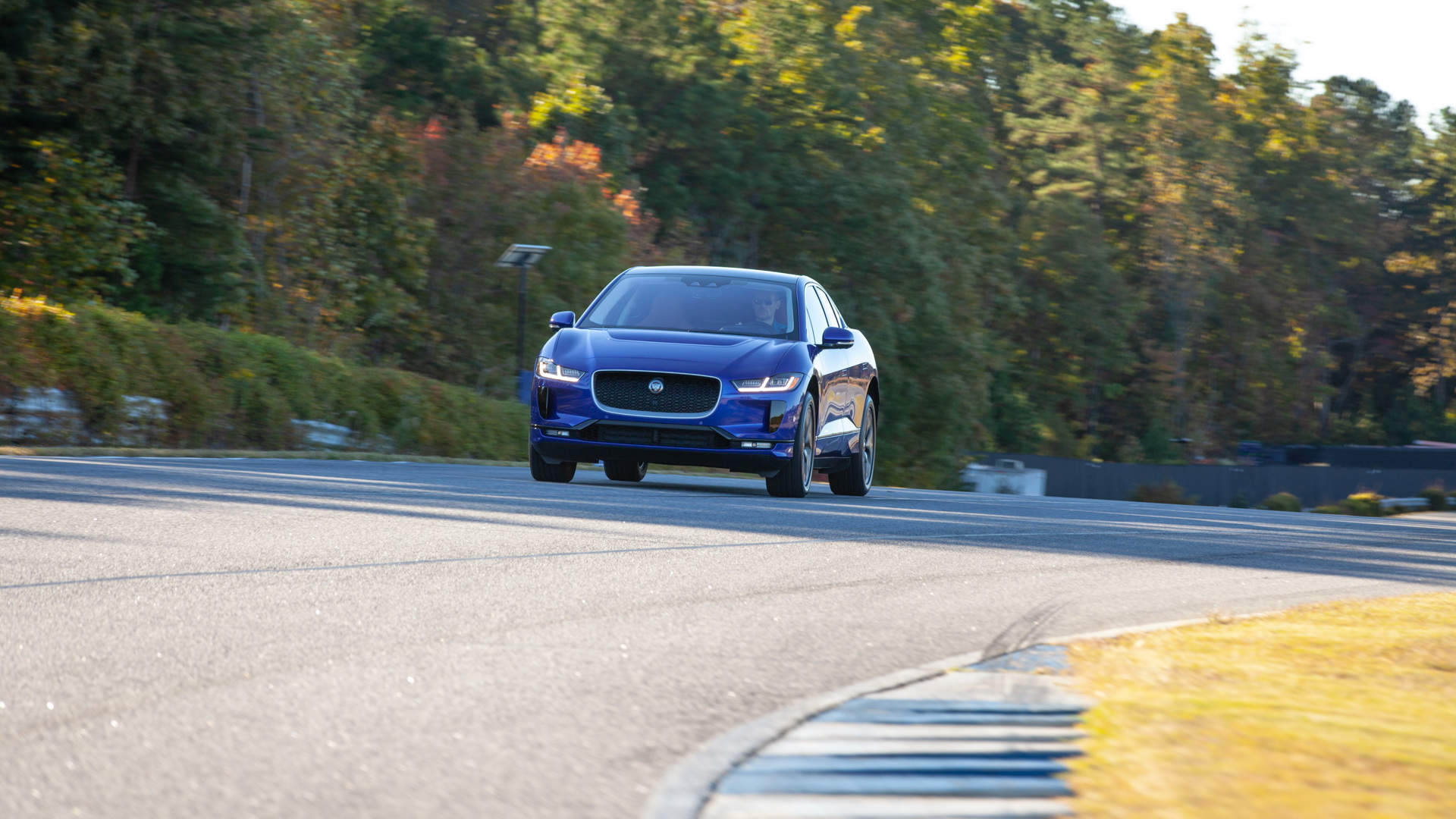The Jaguar I-Pace is a front-runner—the first fully electric, longer-range vehicle from a long-established luxury brand.
But it’s not a “Tesla-fighter” as the I-Pace has often been called. More accurately it exists not to conquest Tesla drivers but to keep electric-car-seeking Jaguar owners in the fold—to give them a tailpipe-free choice and, perhaps, to woo other EV-curious luxury-car owners.
For that set, the I-Pace offers a lot to love, mostly concerning how it was conceived to look, perform, ride, and drive—all Jaguar strengths. We’ve found it has surprisingly many less-desirable traits in its execution, however, apart from those core design and performance points.
DON’T MISS: Jaguar I-Pace beats Tesla Model X in electric car drag-race video
But first, the I-Pace is a very attractive vehicle outside and in. The design team, headed by Ian Callum, has turned an inherently challenging shape into something that from most angles looks beautiful, curvaceous, and planted. Inside it feels like no details are amiss. The cabin’s materials and textures are well-coordinated, and each of the cars we’ve sampled in pre-production form have been soundly assembled, with no squeaks, rattles, or loose pieces.

2019 Jaguar I-Pace First Edition
Four adults can fit quite comfortably, with a beautiful glass roof overhead—although there’s less headroom than you might expect in back—and the rear seats fold forward for larger cargo. One gripe: On a longer-distance cruise, the taller members of the editorial staff couldn’t find a way to avoid resting their knee against the hard trim piece alongside the center console.
Ride quality is an I-Pace strength, too. Especially at highway speeds it might very well be the quietest electric vehicle we’ve driven yet.
The I-Pace drives brilliantly. Its dual-motor system always feels coordinated for traction and free of fluster, and the air suspension feels on-point, keeping pavement jolts out of the cabin and able to raise the height for off-roading or entry/exit.
CHECK OUT: 2019 Jaguar I-Pace real-world review: 3 days with the sexy electric crossover
It doesn’t overwhelm with drive-mode choices, either—something that electric-vehicle enthusiasts might miss but the target audience probably won’t. There are no steering-wheel paddle-shifters, and the only choices remain high and low levels of regen and the option to turn idle creep on or off—much like a Tesla.
The only exception to all this dynamic prowess is the brakes. We’ve driven four different pre-production I-Pace models, two of which had grabby brakes that were tough to gauge as we rolled the final few feet to a stop. In the other two test cars they were gracefully blended, so we know it’s possible. Jaguar says it’s a matter of a software flash.
It’s very quick, with an official (and likely somewhat conservative) 0-60 mph time of 4.5 seconds. We had the I-Pace out on the track, at full speed for the track and at over 100 mph at times, and its power systems never disappointed and never went into a power-limited mode as some Teslas we've tested in the past have done.

2019 Jaguar I-Pace
Enough with the zoom; you’re likely here because of the I-Pace’s green credentials, and one area in which the Jaguar continues to concern us is its driving range and efficiency.
This model’s EPA range rating of 234 miles already makes it feel like an efficiency underachiever, considering its huge, expensive 90-kwh battery pack, stocked with the latest LG Chem pouch cells. In preliminary drives, the vehicle’s range meter hasn’t had much confidence that it will measure up to that, even, leading us to wonder where all the power’s going. We do plan to test real-world range in the near future.
The I-Pace offers 100-kw DC fast charging, where the infrastructure is there to support it; but at this time there’s very little of that infrastructure online. At 100 kw, an 80-percent charge takes about 40 minutes, as opposed to 85 minutes at 50 kw. Level 2 charging takes about 13 hours and, thanks to the loan of an EMotorWerks JuiceBox Pro 40, we were able to plug the I-Pace in overnight and have it available for our editors’ driving loops each morning.
READ MORE: Jaguar delivers first I-Pace electric crossover in North America
Another is its infotainment interface, which is counterintuitive and laggy, and far from easy to use. Actually there are two different touch screens at the center: one above for audio, navigation, and vehicle features, another below for climate control. Jaguar has built a lot of capability in the upper system, but every tap and swipe seemed to flub the first time through, and we couldn’t access Apple CarPlay consistently.
One observation that's been quite consistent from all of our editors is that some things are inexplicably slow at responding—as if there's a processor that just can't keep up. When we went to press the ‘Auto’ climate control mode button on the lower screen, the lagginess got in the way of function, leaving us inadvertently switching back and forth. The temperature, fan, and heated seats are together in one push-pull-twist knob that's pleasantly tactile and intuitive; but even that was laggy in its responses.
Upcoming software flashes should fix all of that. As it is, the I-Pace is compelling, enchanting, and somewhat flawed as a product. Call it full of British character. It’s the surrounding questions of charging and efficiency that make it less of a sure thing than it should be.



















